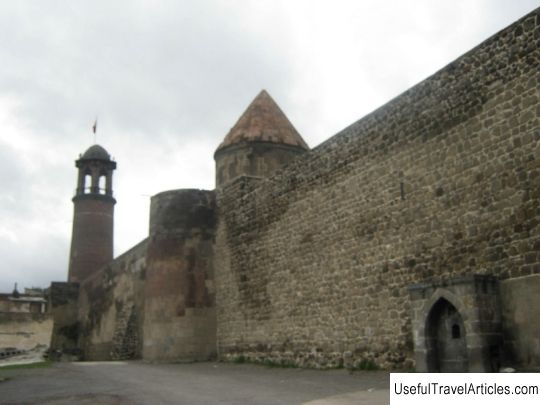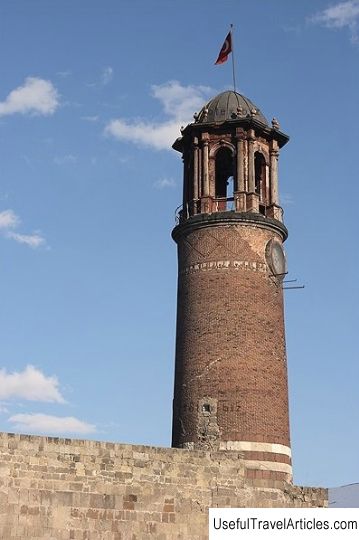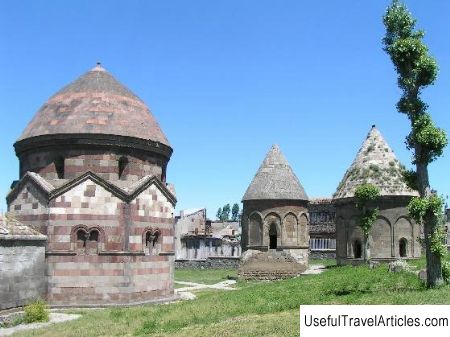Erzurum Fortress (Uc Kumbetler) description and photos - Turkey: Erzurum
Rating: 8,2/10 (7859 votes) 
Erzurum Fortress (Uc Kumbetler) description and photos - Turkey: Erzurum. Detailed information about the attraction. Description, photographs and a map showing the nearest significant objects. The title in English is Uc Kumbetler. Photo and descriptionErzurum is an ancient city located on a high plateau in eastern Turkey. It originated from the Byzantine fortress of Theodosiopolis. The location of the city on the route that ran from Persia to the Black Sea contributed to its development. Throughout history, the city was owned by the Byzantines, Seljuk Turks, Armenians, Arabs. The oldest building in Erzurum is a partially preserved fortress built by Theodosius in the fifth century. It was this fortress that the Russians seized during the Russian-Turkish wars, Alexander Sergeevich Pushkin also visited here, after which he wrote one of the first traveller's diaries in the literature: "A Journey to Erzurum." The Erzurum Fortress, which has a passage along the top walls, stands guard in the center of the Old City on a hill. It was restored in 1555 by Suleiman the Great and was rebuilt a couple of times at different times. Inside the fortress walls, there is a small 12th century mosque with three separate minarets and a conical roof. A neo-baroque gallery was added to the minaret in the nineteenth century. This minaret later became known as Saat Kulezi, which translates as `` clock tower '', if you wish, you can climb it. The clock on the tower was donated by Queen Victoria. There are moats around the fortress. Iron gates, double; they cross them over bridges, between these two gates there are ten cannons (bal-emez). From the side of the Tabriz gates there was only one row of walls, as high as the gates themselves, which connected with the fortress. They were very strong and well fortified (covered with guns, "Like a hedgehog"). Outside there is a high tower, towering over the fortress and rushing into the sky, which is like a stone minaret. This tower is covered with boards and is known as Kesik-kule. It preserved ten beautiful cannons (sarakhs), which in the old days did not allow even a bird to approach the plains stretching from the fortress in all directions. There were also two thousand eighty loopholes in the fortress. All loopholes and battlements had special embrasures. In total, there were about one thousand seven hundred houses inside the citadel. All of them were old buildings and covered with clay. The main system of Erzurum fortifications are rugged mountains, which are very skillfully equipped with powerful fortifications. The fortress wall is a pile of stones faced with stone, fastened with a solution. The bas-relief of the fortress reminds of the heroic past. In the last couple For hundreds of years, the fortress of Erzurum most often had to feel the strength and might of the Russian armies. Erzurum was captured by Russian troops three times. The first seizure of the Erzurum fortress was carried out in 1829 by General Ivan Paskevich, who had vast military experience: participation in Borodino and many other battles with Napoleon's army. General Paskevich on the eve of the storming of Erzurum brilliantly defeated the Turkish troops. In this regard, the city surrendered almost without a fight. The second attempt to capture Erzurum by the Russians was made in October 1878. This time the Turks organized a very good defense of the fortress, so General Gaiman could not take it on the move. Erzurum was handed over to Russia only as a result of an armistice signed in 1879. And the Russians conquered the Erzurum citadel for the third time in 1916 during the First World War. However, this conquest was pointless, since the Russian Empire ceased to exist a year later.              We also recommend reading Wat Phnom temple description and photos - Cambodia: Phnom Penh Topic: Erzurum Fortress (Uc Kumbetler) description and photos - Turkey: Erzurum. |




